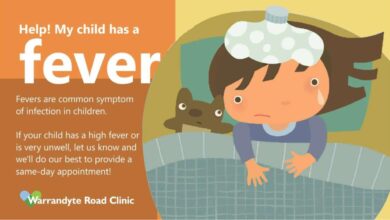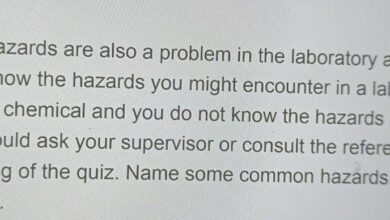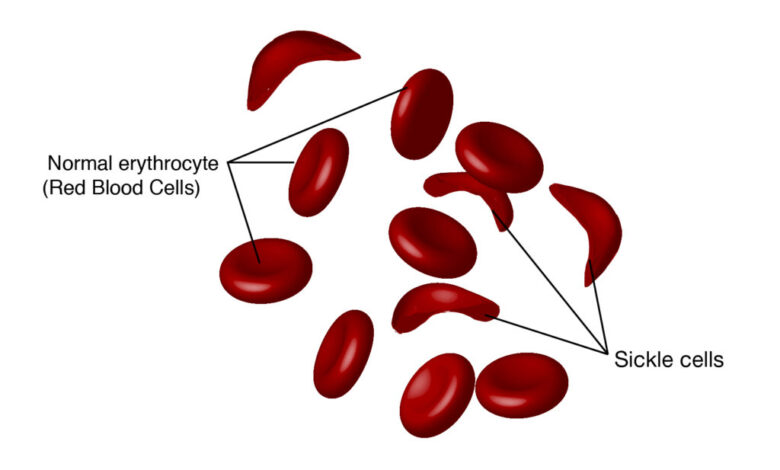
Can sickle cell trait cause symptoms? This comprehensive exploration dives into the complexities of sickle cell trait, examining its potential to manifest various symptoms, ranging from mild discomfort to severe complications. We’ll unravel the genetic underpinnings, discuss triggers, and highlight the importance of understanding individual variability in symptom presentation. From everyday experiences to medical considerations, this deep dive into the topic will equip you with crucial insights.
Understanding the definition of sickle cell trait is crucial to grasping the nuances of potential symptoms. Distinguishing it from sickle cell disease is paramount, as their genetic bases and clinical presentations differ significantly. We’ll explore the prevalence of this genetic condition globally and how it affects individuals differently.
Defining Sickle Cell Trait
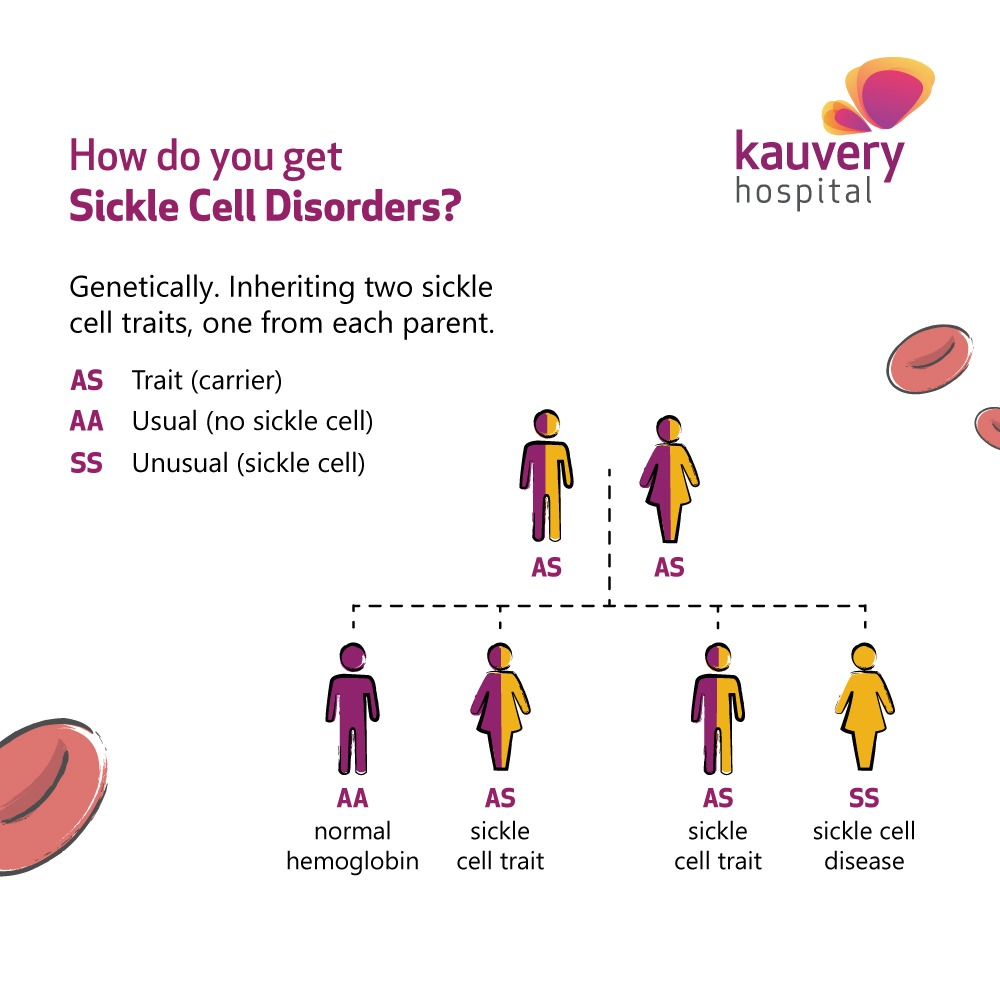
Sickle cell trait is a common genetic condition that affects the red blood cells. Understanding this condition is crucial for individuals who may carry the trait and for healthcare professionals who need to be aware of its potential implications. This section will delve into the specifics of sickle cell trait, its distinction from sickle cell disease, and its global prevalence.
Trait Definition
Sickle cell trait is a benign condition where an individual inherits one normal hemoglobin gene and one abnormal hemoglobin gene. This means they have a mixture of normal and abnormal hemoglobin. This difference in hemoglobin structure can lead to certain changes in red blood cells under specific conditions.
Disease Difference
Sickle cell trait differs significantly from sickle cell disease. While both conditions are related to hemoglobin, sickle cell disease results from inheriting two abnormal hemoglobin genes. This leads to a much greater likelihood of experiencing symptoms, as the abnormal hemoglobin predominates. In contrast, sickle cell trait does not typically cause the severe health complications associated with sickle cell disease.
Genetic Basis
The genetic basis of sickle cell trait lies in a single-gene mutation. The mutation alters the structure of hemoglobin, the protein responsible for carrying oxygen in red blood cells. This altered hemoglobin, known as HbS, can cause the red blood cells to become rigid and sickle-shaped under low-oxygen conditions. Individuals with sickle cell trait inherit one copy of the normal hemoglobin gene (HbA) and one copy of the mutated hemoglobin gene (HbS).
This heterozygous genotype is responsible for the presence of sickle cell trait.
HbA + HbS = Sickle Cell Trait
Global Prevalence
The prevalence of sickle cell trait varies significantly across different parts of the world, largely correlating with geographic regions where malaria is or was prevalent. Regions with a history of high malaria transmission often have higher rates of sickle cell trait carriers. This is because having sickle cell trait provides a degree of protection against malaria. In these regions, the frequency of the HbS gene is higher due to natural selection.
Examples include parts of sub-Saharan Africa, the Mediterranean region, and some parts of the Middle East and India.
| Trait Definition | Disease Difference | Genetic Basis | Global Prevalence |
|---|---|---|---|
| Sickle cell trait is a condition where an individual inherits one normal hemoglobin gene and one abnormal hemoglobin gene. | Sickle cell trait is different from sickle cell disease, which is caused by inheriting two abnormal hemoglobin genes. | A single-gene mutation alters the structure of hemoglobin, leading to the presence of both normal and abnormal hemoglobin in red blood cells. | Prevalence varies geographically, often higher in regions with a history of malaria due to the protective effect against malaria. |
Understanding Symptoms
Sickle cell trait, while generally benign, can sometimes cause symptoms, particularly under specific conditions. Understanding the potential symptoms, their range, and triggers is crucial for individuals with the trait to proactively manage their well-being. This knowledge empowers them to seek timely medical attention if needed.The symptoms associated with sickle cell trait are often mild and temporary, but they can vary significantly between individuals.
While sickle cell trait itself usually doesn’t cause noticeable symptoms, it’s fascinating how advancements in medicine are impacting other health areas. For example, the recent FDA approval of a new injectable drug regimen for HIV patients ( fda approves first injectable drug regimen for adults living with hiv ) highlights the potential for similar breakthroughs in managing various health conditions.
This raises the question of whether genetic conditions like sickle cell trait could also benefit from future treatments and research.
The absence of symptoms in many cases doesn’t negate the importance of understanding the potential for complications. A proactive approach to health management is key.
Potential Symptoms
The symptoms of sickle cell trait are primarily related to the reduced oxygen-carrying capacity of the red blood cells. This can lead to various discomfort levels, depending on the individual and the circumstances.
- Pain: Episodes of pain, often described as sharp or throbbing, can occur in various parts of the body, such as the back, legs, or abdomen. The intensity and duration of these pain episodes vary considerably. These episodes, although not as severe as those seen in sickle cell disease, can be quite disruptive.
- Fatigue: Some individuals with sickle cell trait may experience fatigue or weakness, particularly during or after strenuous activity or when exposed to conditions that reduce oxygen levels, such as high altitudes or extreme temperatures.
- Swelling: Swelling in the hands and feet, often accompanied by pain, can occur due to reduced blood flow. This is a less common symptom than pain.
- Dizziness and Headaches: Dizziness and headaches can be triggered by dehydration or strenuous physical activity.
- Jaundice: In rare instances, mild jaundice (yellowing of the skin and eyes) may occur. This is a less common symptom and typically resolves on its own.
Symptom Triggers
Several factors can trigger or exacerbate symptoms in individuals with sickle cell trait. Knowing these triggers is vital for preventative measures.
- Dehydration: Dehydration can reduce the amount of oxygen-carrying capacity in the blood, increasing the risk of symptoms. Ensuring adequate fluid intake is crucial.
- Strenuous Exercise: Intense physical activity can increase the body’s demand for oxygen, potentially leading to pain or other symptoms. Proper warm-up and cool-down routines are important.
- High Altitude: Individuals at high altitudes face reduced atmospheric oxygen, which can cause symptoms.
- Cold Temperatures: Extreme cold can reduce blood flow, potentially leading to pain or swelling in the extremities.
- Infections: Infections can further stress the body and potentially increase the likelihood of symptom occurrence.
Symptom Comparison
The following table provides a comparison of symptoms associated with sickle cell trait and sickle cell disease. This helps to understand the differences in severity and presentation.
| Characteristic | Sickle Cell Trait | Sickle Cell Disease |
|---|---|---|
| Pain | Mild to moderate, episodic pain; often triggered by specific conditions. | Severe, chronic pain crises; frequent and unpredictable. |
| Frequency of Pain Crises | Rare or absent, except in extreme circumstances. | Frequent, sometimes daily or weekly. |
| Swelling | Mild, occasional swelling in extremities. | Significant, sometimes severe swelling, especially during crises. |
| Fatigue | Mild fatigue, potentially linked to dehydration or exertion. | Significant fatigue, often persistent. |
| Organ Damage | Rare or absent; no significant organ damage associated with the trait. | Potentially significant organ damage due to recurrent episodes. |
Triggers and Risk Factors
Sickle cell trait, while generally asymptomatic, can sometimes lead to painful episodes. Understanding the factors that might trigger these symptoms is crucial for proactive management and well-being. This section delves into the potential triggers, exploring how dehydration, high altitudes, and strenuous activity can influence the presentation of sickle cell trait symptoms.Factors such as dehydration, high altitudes, and strenuous exercise can significantly impact individuals with sickle cell trait.
Recognizing these triggers allows for better self-care and informed decisions about activities. The severity of symptoms can vary based on individual factors and the specific trigger.
While sickle cell trait itself usually doesn’t cause noticeable symptoms, researchers are constantly uncovering early warning signs for diseases like Alzheimer’s. For example, can certain biomarkers potentially predict Alzheimer’s onset 30 years in advance? Learning about these early detection methods for conditions like Alzheimer’s could potentially help researchers identify and treat conditions much earlier, which might even shed light on how to better understand and manage the symptoms of sickle cell trait.
can alzheimers be detected 30 years before it appears Ultimately, the complex interplay of genetics and environment still needs further exploration in both sickle cell trait and other diseases.
Dehydration and Sickle Cell Trait Symptoms
Dehydration is a significant trigger for individuals with sickle cell trait. Reduced fluid intake leads to a higher concentration of red blood cells in the bloodstream. This increased concentration can cause the sickle-shaped red blood cells to clump together more easily, potentially obstructing blood flow and leading to pain crises. Maintaining adequate hydration is paramount for preventing or mitigating symptoms.
For instance, an individual experiencing dehydration during intense physical activity is more prone to experiencing a sickle cell crisis than one who is well-hydrated.
High Altitudes and Sickle Cell Trait Symptoms
High altitudes present another potential trigger for individuals with sickle cell trait. At higher altitudes, the air contains less oxygen. The body compensates by producing more red blood cells, which can increase the risk of red blood cell clumping and potential blockages. This is particularly relevant for individuals participating in strenuous activities at high altitudes. For example, hikers or mountaineers with sickle cell trait should be aware of the heightened risk of symptoms at higher altitudes and take precautions like increasing fluid intake and acclimatizing gradually.
Strenuous Exercise and Sickle Cell Trait Symptoms
Strenuous exercise can also trigger symptoms in individuals with sickle cell trait. Increased physical activity increases the body’s demand for oxygen, potentially leading to a higher concentration of red blood cells and an increased risk of sickling. Proper hydration and pacing are crucial to manage the risk of symptoms during exercise. Athletes with sickle cell trait should listen to their bodies and adjust their activity levels accordingly.
Triggers for Symptoms in Different Age Groups
The triggers for symptoms in individuals with sickle cell trait can differ based on age. Children and adolescents may be more susceptible to symptoms triggered by infections or illnesses, while adults might experience symptoms more frequently during strenuous exercise or in environments with high altitudes. This is due to the varying levels of physical activity and exposure to different environmental factors in different age groups.
Environmental Factors and Symptom Presentation
Environmental factors can play a role in symptom presentation. For example, individuals living in areas with high temperatures or humidity may experience a higher frequency of symptoms due to the increased risk of dehydration. Also, exposure to infections can trigger a crisis. Understanding the local climate and potential infectious diseases can help manage symptoms.
Comparison of Triggers Across Age Groups
| Trigger | Impact | Age Group |
|---|---|---|
| Dehydration | Increased risk of sickling, pain crises | All |
| High altitude | Reduced oxygen, increased red blood cell production, potential for sickling | All, especially those participating in strenuous activities at high altitudes |
| Strenuous exercise | Increased oxygen demand, potential for sickling | All, particularly adolescents and adults |
| Infections | Immune response can trigger a crisis | Children and adolescents |
| Heat and humidity | Increased risk of dehydration, potential for symptom exacerbation | All |
Medical Considerations
Having sickle cell trait, while not a disease in itself, does present specific medical implications. Understanding these considerations is crucial for proactive health management and minimizing potential risks. Individuals with sickle cell trait should be aware of the need for preventive measures and how to respond to certain situations.Individuals with sickle cell trait generally lead healthy lives, but they require a heightened awareness of potential complications and the importance of regular medical care.
Early detection and preventative strategies are key to managing the risks associated with this condition.
Medical Implications
Sickle cell trait, although not typically symptomatic, can lead to specific health issues under certain conditions. For example, individuals with sickle cell trait may experience mild to moderate pain during strenuous physical activity or in situations with low oxygen levels, like high altitudes. The risk of complications like acute chest syndrome or splenic sequestration crisis is also increased under certain circumstances.
Importance of Preventative Measures
Proactive steps can significantly reduce the risk of complications. Staying hydrated is paramount, especially during strenuous activity or in hot weather. Avoiding dehydration and maintaining adequate fluid intake can help prevent the formation of sickle-shaped red blood cells.Regular exercise is beneficial for overall health, but individuals with sickle cell trait should listen to their bodies and avoid overexertion.
If symptoms arise during exercise, it’s essential to stop immediately and rest. Individuals should also be cautious when exposed to extreme temperatures or altitudes, as these situations can increase the risk of complications.
Need for Medical Attention in Specific Cases
Prompt medical attention is crucial in situations where symptoms are severe or prolonged. Symptoms like severe pain, difficulty breathing, or unusual weakness warrant immediate consultation with a healthcare provider. These symptoms might indicate an underlying complication requiring medical intervention. It is important to have a healthcare provider who is familiar with sickle cell trait and can provide appropriate guidance.
Importance of Regular Check-ups and Screenings
Regular check-ups are essential for individuals with sickle cell trait. These check-ups allow for early detection of any potential complications and enable proactive management of the condition. Routine blood tests can help monitor the health of the red blood cells and identify any abnormalities early on.
Role of Genetics Counseling
Genetic counseling plays a vital role in providing information and support to individuals with sickle cell trait and their families. Genetic counselors can explain the inheritance pattern of the trait, discuss the potential risks associated with pregnancy, and offer guidance on family planning. They can also connect individuals with support groups and resources to help manage the condition.
Preventative Measures and Recommended Screenings
| Preventative Measure | Recommended Screening |
|---|---|
| Hydration | Regular blood tests to monitor red blood cell health |
| Avoidance of dehydration | Genetic counseling to understand inheritance patterns and risks |
| Moderate exercise | Regular check-ups with a healthcare provider |
| Avoiding extreme temperatures and altitudes | Awareness of potential triggers and symptoms |
| Seek immediate medical attention for severe symptoms | Information on available support groups and resources |
Illustrative Case Studies
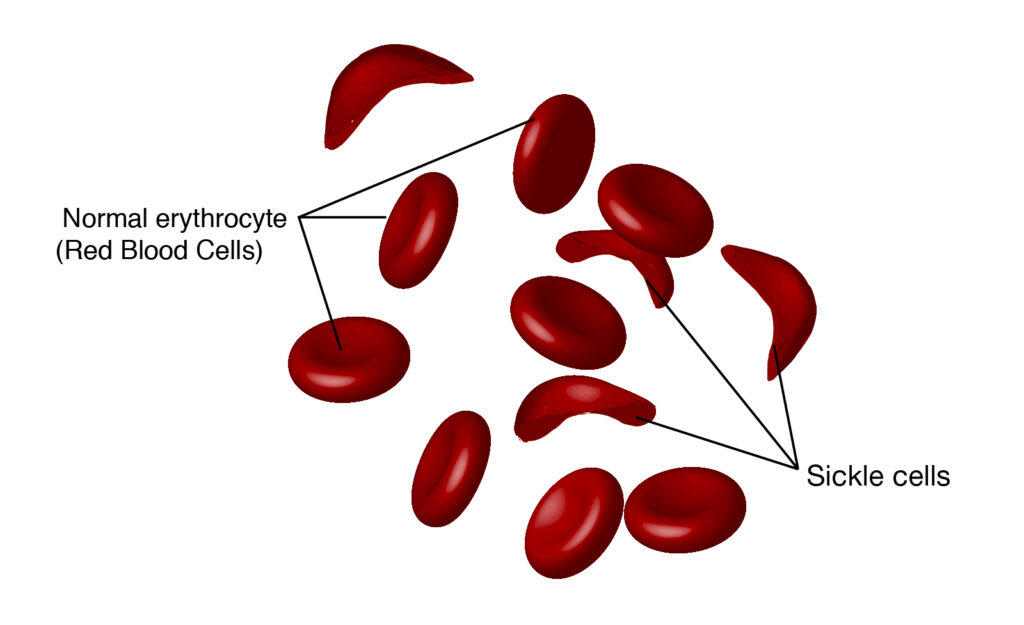
Understanding sickle cell trait symptoms requires recognizing that their presentation varies significantly from person to person. Mild symptoms might be barely noticeable, while others can be quite severe. This section explores illustrative case studies, highlighting the spectrum of experiences and the importance of individual variability in symptom presentation. This understanding is crucial for appropriate medical management and preventive strategies.
Mild Symptoms in a Young Adult
A 22-year-old college student, Sarah, with sickle cell trait occasionally experiences mild headaches and fatigue during periods of intense physical activity, such as marathon training. These symptoms typically resolve with rest and hydration. Her symptoms are usually manageable, and she continues to participate in her normal activities, including sports and a social life. She often self-treats with rest and fluids.
This illustrates how mild symptoms might be intermittent and manageable, allowing individuals to maintain a relatively normal lifestyle.
Severe Symptoms in an Adolescent
A 16-year-old basketball player, David, experienced severe pain in his lower back and legs during a high-intensity game. The pain was sharp, throbbing, and debilitating, limiting his mobility. The pain episodes lasted for several hours and required medical intervention. The situation highlights the potential for severe, incapacitating pain associated with sickle cell trait under specific conditions. This could be a result of increased stress on the body or dehydration, and warrants immediate medical attention.
While sickle cell trait itself usually doesn’t cause noticeable symptoms, it’s important to remember that some individuals experience mild symptoms like fatigue or pain. This is different from the dangers of raw dog food, which can carry harmful bacteria like Salmonella and E. coli, potentially leading to serious illnesses for both pets and people. Raw dog food is dangerous for pets and people because of these risks.
Ultimately, understanding the potential health implications of both conditions is crucial for making informed decisions.
Individual Variability in Symptom Presentation
Symptoms of sickle cell trait vary considerably among individuals. Genetic factors, environmental conditions, and individual responses to triggers influence the severity and frequency of symptoms. This underscores the importance of personalized healthcare strategies tailored to each patient’s unique experience. Medical professionals need to assess individual responses to triggers and tailor management approaches.
Scenario Requiring Immediate Medical Attention, Can sickle cell trait cause symptoms
Imagine a scenario where a person with sickle cell trait experiences sudden, severe chest pain accompanied by shortness of breath and dizziness during a hiking trip. This combination of symptoms could indicate a serious complication, such as acute chest syndrome, a potentially life-threatening condition. Immediate medical attention is crucial in this situation to prevent further complications.
Impact of Dehydration on Symptoms
Dehydration significantly exacerbates symptoms in individuals with sickle cell trait. When the body is not adequately hydrated, the blood becomes more viscous, increasing the risk of blood clots and potentially triggering painful vaso-occlusive crises. This effect is amplified by physical exertion or heat exposure. This demonstrates how critical it is for individuals with sickle cell trait to maintain proper hydration, especially during strenuous activity or hot weather.
Summary of Case Studies
| Case Study | Symptom Presentation | Severity | Key Considerations |
|---|---|---|---|
| Sarah (Young Adult) | Mild headaches, fatigue during intense activity | Mild | Manageable with rest and hydration; relatively normal lifestyle |
| David (Adolescent) | Severe back and leg pain during intense activity | Severe | Requires medical intervention; potential for acute complications |
| Scenario: Chest Pain/Shortness of Breath | Sudden chest pain, shortness of breath, dizziness | Severe, potentially life-threatening | Immediate medical attention required |
| Dehydration Impact | Exacerbated pain, increased risk of blood clots | Variable, but potentially severe | Hydration is crucial, especially during exertion |
Public Health Implications
The knowledge of sickle cell trait (SCT) extends beyond individual health; it has significant implications for public health. Understanding the prevalence, potential complications, and preventative measures associated with SCT is crucial for developing effective public health strategies. Early identification and appropriate management of individuals with SCT can significantly reduce the burden of the disease and improve overall community health.Public awareness campaigns play a pivotal role in educating the population about SCT, its implications, and the importance of early diagnosis.
This knowledge empowers individuals to make informed decisions regarding their health and the health of their families. By fostering a culture of understanding and proactive health management, we can mitigate the impact of SCT on individuals and communities.
Importance of Public Awareness Campaigns
Public awareness campaigns are essential to reduce the stigma surrounding SCT and promote understanding of the condition. They can highlight the importance of genetic counseling and screening, particularly in communities with high prevalence rates. These campaigns should emphasize that SCT itself is not a disease but a genetic trait that can affect the health of offspring. This distinction is critical in avoiding unnecessary fear and discrimination.
Role of Genetic Screening in Preventative Measures
Genetic screening programs can significantly reduce the risk of children inheriting sickle cell disease (SCD). By identifying individuals with SCT, particularly in couples planning pregnancy, genetic counseling can help them understand the potential risks and make informed choices about family planning. This proactive approach to preventative measures is critical in reducing the incidence of SCD in future generations.
Universal screening programs can offer a vital means of identifying individuals with SCT and preventing the birth of children with SCD.
Benefits of Early Diagnosis
Early diagnosis of SCT is crucial for appropriate management and counseling. Individuals with SCT can be advised on precautions to take to prevent complications. For example, they can be advised to stay hydrated, especially during periods of intense physical activity or stress. Furthermore, early diagnosis allows for the monitoring of individuals with SCT, enabling early intervention if complications arise.
Early diagnosis allows for the identification of individuals who may be at higher risk for complications and allows for tailored preventative measures.
Educational Materials, Outreach Strategies, and Target Audiences
Developing targeted educational materials and outreach strategies is vital for maximizing the impact of public health campaigns. These initiatives should be tailored to specific communities and demographics to ensure effective communication and engagement. The materials should be easily understandable, culturally sensitive, and readily available to diverse populations.
| Educational Materials | Outreach Strategies | Target Audiences |
|---|---|---|
| Brochures, pamphlets, fact sheets | Community health fairs, workshops, presentations | General public, expectant parents, high school students, college students |
| Videos, online resources, social media campaigns | Collaboration with community organizations, schools, and healthcare providers | Specific ethnic groups with high SCT prevalence, healthcare professionals |
| Interactive games, educational apps | Targeted advertising campaigns, partnerships with media outlets | Children, adolescents, families |
Need for Educational Programs for Healthcare Professionals
Healthcare professionals, including primary care physicians, pediatricians, and obstetricians, need specialized training to effectively manage and counsel individuals with SCT. Comprehensive educational programs should equip healthcare professionals with the knowledge and skills necessary to provide appropriate care and support. This training will ensure that individuals with SCT receive accurate information and appropriate preventative measures.
Distinguishing Symptoms from Other Conditions
Identifying the cause of symptoms is crucial for appropriate treatment. Sickle cell trait, while often asymptomatic, can manifest in various ways, sometimes mimicking symptoms of other conditions. Accurate diagnosis relies on understanding the subtle differences between sickle cell trait symptoms and those of similar hematological disorders.Differentiating sickle cell trait from other conditions requires a comprehensive evaluation that considers the patient’s medical history, physical examination findings, and laboratory results.
A thorough understanding of the similarities and differences in symptoms is vital for avoiding misdiagnosis and ensuring appropriate management.
Similarities and Differences in Symptoms
Symptoms of sickle cell trait can overlap with those of other hematological conditions, making accurate diagnosis challenging. Careful attention to the specifics of the symptoms, along with the patient’s medical history, is essential for a proper diagnosis.
- Overlap in Symptoms: Certain symptoms, such as fatigue, pain, and shortness of breath, can occur in both sickle cell trait and other conditions. This overlap highlights the need for further investigation to determine the underlying cause.
- Unique Characteristics: While some symptoms may overlap, sickle cell trait often presents with unique characteristics. For instance, episodic pain crises are a hallmark symptom of sickle cell disease, but are less frequent and less severe in sickle cell trait. Recognizing these distinguishing features can guide diagnostic decisions.
Comparison Table of Symptoms
The table below summarizes potential symptoms and their comparison to other hematological conditions. This table is not exhaustive, and consulting with a healthcare professional is always necessary for diagnosis.
| Symptom | Sickle Cell Trait | Sickle Cell Disease | Thalassemia | Iron Deficiency Anemia |
|---|---|---|---|---|
| Pain | Occasional, mild to moderate, often localized; associated with dehydration or strenuous activity. | Frequent, severe, and debilitating pain crises, affecting various parts of the body. | Chronic fatigue, pallor, mild to moderate pain, often related to bone growth. | Fatigue, weakness, pallor, headache, dizziness; may have associated abdominal pain or sore mouth. |
| Fatigue | Variable, can range from mild to significant; often associated with infections or stress. | Significant fatigue, affecting daily activities. | Chronic fatigue, affecting daily activities. | Significant fatigue, affecting daily activities; often accompanied by shortness of breath. |
| Shortness of Breath | Possible, especially during exertion or infection; usually not severe. | Possible, particularly during crisis, but often severe. | Possible, particularly during crisis, but often severe. | Possible, often related to reduced oxygen-carrying capacity of the blood. |
| Swelling | Possible, but typically not severe or prolonged; often related to inflammation or infection. | Possible, often associated with painful swelling of the hands and feet. | Possible, especially in the joints. | Possible, but usually not a prominent feature. |
Identifying Symptoms Attributable to Sickle Cell Trait
Recognizing the patterns of symptoms associated with sickle cell trait is essential. Symptoms are often triggered by factors like dehydration, high altitudes, or strenuous exercise.
- History of Symptoms: A thorough review of the patient’s medical history, including previous episodes of pain, fatigue, or other symptoms, is critical. The frequency, duration, and location of pain should be noted.
- Triggers: Identifying specific factors that trigger symptoms, such as dehydration, strenuous activity, or infections, can be helpful in differentiating sickle cell trait from other conditions.
- Associated Conditions: Consider any other medical conditions the patient might have. The presence of other conditions can influence the presentation of symptoms.
Importance of Accurate Diagnosis
Proper diagnosis is essential for appropriate management and to rule out other conditions. A precise diagnosis allows for tailored treatment plans, reducing the risk of complications and ensuring better quality of life.
- Targeted Treatment: Accurate diagnosis enables the development of a targeted treatment plan that addresses the specific needs of the individual.
- Prognosis: Understanding the underlying condition allows for a more accurate prognosis and better management of potential complications.
- Avoidance of Mismanagement: Accurate diagnosis prevents misdiagnosis and inappropriate treatment strategies, which can be harmful.
Ruling Out Other Conditions
A crucial aspect of diagnosis is to rule out other conditions that might present with similar symptoms. This necessitates a comprehensive evaluation, including blood tests and genetic testing.
- Blood Tests: Complete blood counts (CBCs) and other relevant blood tests are essential for evaluating red blood cell morphology and identifying any abnormalities.
- Genetic Testing: Genetic testing for sickle cell trait provides a definitive diagnosis.
- Differential Diagnosis: Consider alternative diagnoses based on the patient’s symptoms, medical history, and laboratory findings.
Wrap-Up: Can Sickle Cell Trait Cause Symptoms
In conclusion, while sickle cell trait itself doesn’t always cause noticeable symptoms, understanding the potential for them is essential. Factors like dehydration, high altitude, and strenuous exercise can influence symptom manifestation. This discussion highlights the importance of recognizing triggers and the need for prompt medical attention in specific cases. Ultimately, knowledge is empowering, allowing individuals to proactively manage their well-being and seek appropriate medical care when needed.



